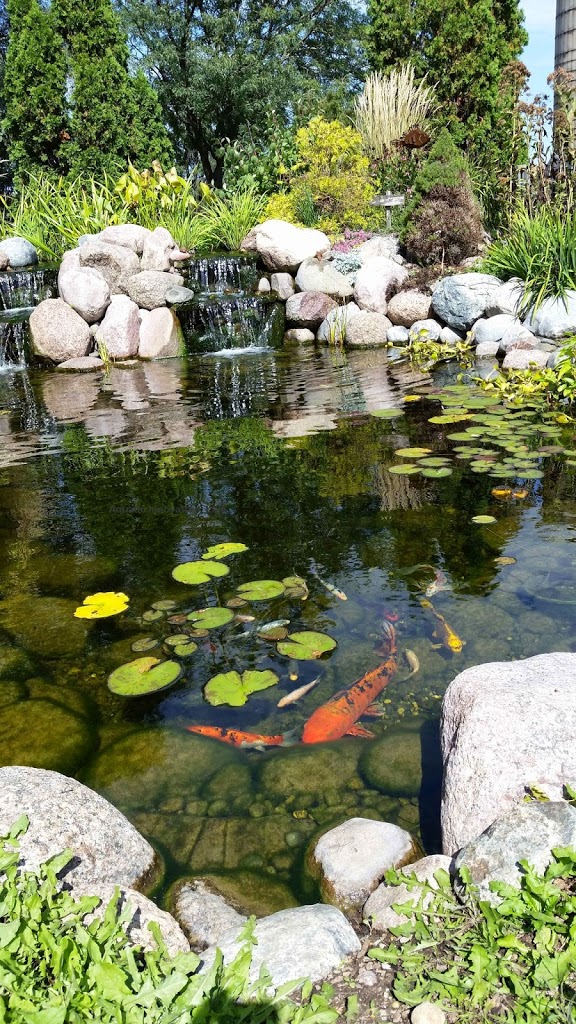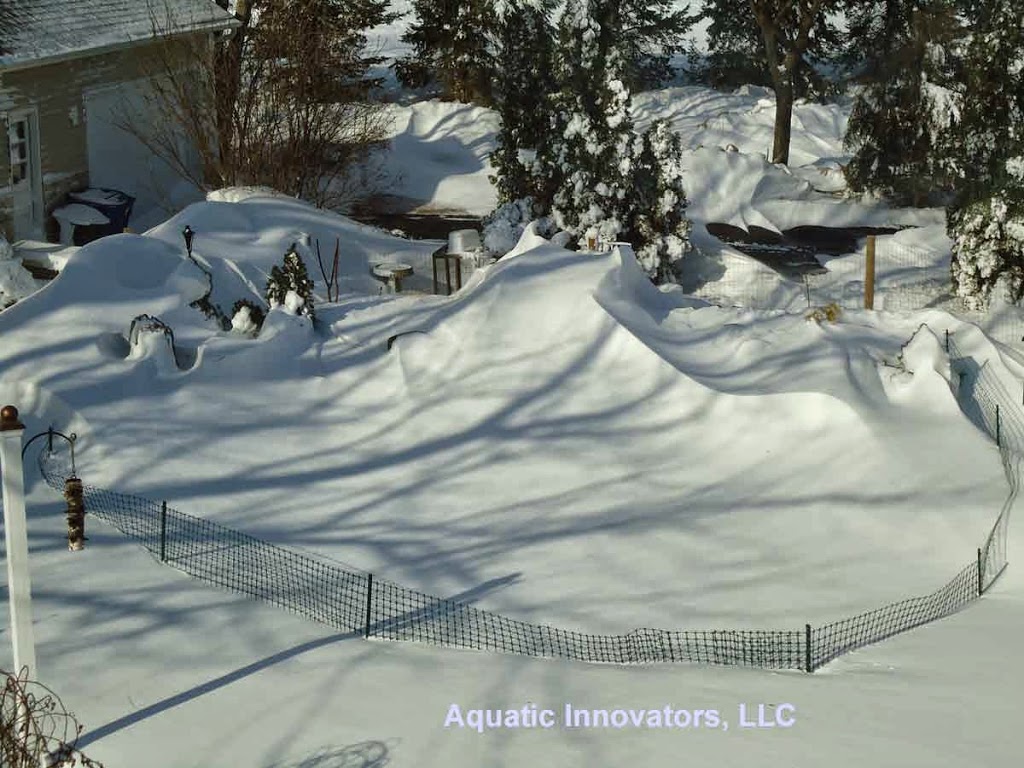 |
| Later Summer Pond. Koi looking for food. |
 |
| The pond just after the storm. Deicer and pump need to be uncovered. |
 |
| Later Summer Pond. Koi looking for food. |
 |
| The pond just after the storm. Deicer and pump need to be uncovered. |
Reminder – DO NOT bang on the ice to create an opening in it. This is harmful to your fish due to the sound waves created by the banging. If you find that your pond has frozen over for some reason (e.g. power outage, equipment failure), contact us for some ideas to safely open it up.
1) Maintaining Proper Water level – Check the water level and add more as needed.
This is especially critical if you have a skimmer with a pump inside and it is operating as it normally does during the warmer months. Where does the water go? Water will continue to evaporate, albeit at a much slower rate than during the summer. Also, as ice forms across the pond and throughout the stream and waterfall, less water is available. Small water losses have a larger impact on the water level. As water splashes onto the adjacent rocks and the ice covering the pond, that water freezes, essentially leaving the system and becoming “unavailable” (until it melts again in the spring). It generally only takes a 5-gallon bucket or two to get the water level back to the normal operating level, unless an ice dam developed and diverted a large amount of water out of the system.
2) Uncover your deicer and pump
These items work well for maintaining an opening in the ice during the winter months. However, heavy snow fall events, high winds and drifting, and blizzards (similar to what we recently encountered) can overpower the abilities of these items, and create a snow dome over them. Snow is a great insulator and can block the ever important gas exchange (oxygen dissolving into the water and toxic gases exiting the water) from taking place. So go ahead and carefully shovel/scrape the snow from covering these up. Your fish will love you for it. Be careful if you step onto the ice to do this. We do not want to hear about anyone stepping out onto thin ice. That water is cold. Brrrrrr!
3) Check the debris basket/nets and pre-filters
These items are there to protect your pump, and as long as water flows through them, they will continue to filter out and collect items before they reach your pump. Similar to what happens during the summer, too much “stuff”, and your pump will become starved from having enough water to operate correctly, and potentially burn out early. So check these items and remove the debris.
Remember to visit our Facebook, Twitter, and YouTube sites as we have added pictures, video clips and additional reminders/suggestions to them.
Winter has set in and your fish are resting patiently under the snow and ice waiting for spring to come. Be sure to give your fish the best chances of making it through until that time comes.
You prepared your pond for winter by trimming the plants back and removing the bulk of the organic matter (leaves, sticks, etc.). You installed a small bubbling pump too agitate/recirculate the shallow water to promote gas exchange. You also installed a de-icer to keep a small opening in the ice. What else can do? Keep the snow from covering the openings created by the bubbler and de-icer. As the snow builds up in depth and drifts creep across the ice, the openings created by the bubbler and de-icer can easily get covered and rendered useless.
Snow is a great insulator and can prevent the much needed gas exchange from occurring. So go out and look over your pond. If the snow has covered up the openings in the ice, carefully clear the snow away. Your fish will be happy you did.
4321 E. Maple Lane Rd.
Janesville, WI 53546
Phone: (608) 373-7040
Pond, Stream, Waterfall, Water Feature and Rainwater Harvesting Professionals!
